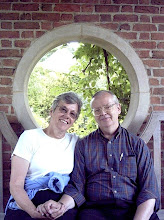In his new book New Think, Edward de Bono talks about vertical and lateral thinking. Vertical thinking begins with a single concept and then proceeds with that concept until a solution is reached. Lateral thinking refers to thinking that generates alternative ways of seeing a problem before seeking a solution. At one point in his book, De Bono explains vertical and lateral thinking by refering to the digging of holes. He states:
Logic is the tool that is used to dig holes deeper and bigger, to make them altogether better holes. But if the hole is in the wrong place, then no amount of improvement is going to put it in the right place. No matter how obvious this may seem to every digger, it is still easier to go on digging in the same place than to start all over again in a new place. Vertical thinking is digging the same hole deeper; lateral thinking is trying again elsewhere.
— James L. Adams, Conceptual Blockbusters: A Guide to Better Ideas, p. 34.
....In an essay, "The Three Domains of Creativity," Arthur Koestler, one of the more important writers who treat conceptualization, identifies these "domains" as artistic originality (which he calls the "ah!" reaction), scientific discovery (the "aha!" reaction), and comic inspiration (the "haha!" reaction). He defines creative acts as the combination of previously unrelated structures in such a way that you get more out of the emergent whole than you have put in. He explains comic inspiration, for example, as stemming from "the interaction of two mutually exclusive associative contexts." As in creative artistic and scientific acts, two ideas have to be brought together that are not ordinarily combined. This is one of the essentials of creative thinking.
— James L. Adams, Ibid., p. 57.
....I accept what seem to me architecture's inherent limitations, and attempt to concentrate on the difficult particulars within it rather than the easier abstractions about it "... because the arts belong (as the ancients said) to the practical and not the speculative intelligence, there is no surrogate for being on the job."9
9David Jones, Epoch and Artist, 1959, p. 12.
— Robert Venturi, Complexity and Contradiction in Architecture, p. 21.
The city street façade can provide a type of juxtaposed contradiction that is essentially two-dimensional. Frank Furness' Clearing House, now demolished like many of his best works in Philadelphia, contained an array of violent pressures within a rigid frame. The half-segmental arch, blocked by the submerged tower which, in turn, bisects the façade into a near duality, and the violent adjacencies of rectangles, squares, lunettes, and diagonals of contrasting sizes, compose a building seemingly held up by the buildings next door: it is an almost insane short story of a castle on a city street. All these relationships of structure and pattern contradict the severer limitations associated with a façade, a street line, and contiguous row houses.
— Robert Venturi, Ibid., p. 61.
Subscribe to:
Post Comments (Atom)

No comments:
Post a Comment